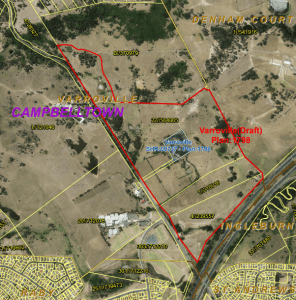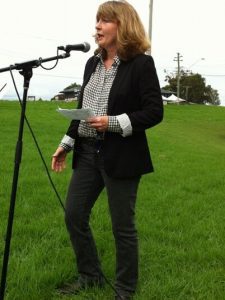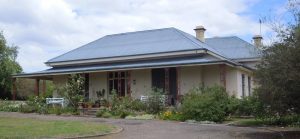
Heritage listing of land around Varro Ville Homestead could scuttle plans for a giant, 136,000 plot cemetery.
The owners of Varro Ville Homestead, Jacqui Kirkby and Peter Gibbs, have today welcomed the ruling by the Heritage Council of NSW that the land around Varro Ville Homestead – currently the subject of a development application for a cemetery – is of state heritage significance.
The Heritage Council have now asked NSW Heritage minister Gabrielle Upton to list land surrounding Varro Ville Homestead (owned by the Catholic Metropolitan Cemeteries Trust (CMTC) and the Department of Planning) on the State Heritage Register as part of an expanded curtilage for Varro Ville.
Currently the only part of the 1810 Varro Ville estate on the Register is Varro Ville Homestead on 3.16 hectares.
The minister must now decide whether to take the advice of the Heritage Council – a panel of expert advisers appointed by the minister – and approve the listing.
Ms Kirkby and Mr Gibbs say that if the Scenic Hills land is so listed, the Catholic Cemeteries Trust would need the approval of the Heritage Council for any development on the listed land.
The Heritage Council, which has previously objected to the cemetery proposal, along with other state based heritage organisations, had asked the CMCT and the Department of Planning to defer any decision on the rezoning of the land until the heritage status of the land could be settled.
Both ignored this request.
On October 17 the CMCT lodged its development application (DA) for a cemetery with Campbelltown Council without the listing having been finalised.
The DA does not seek approval of its plans under the Heritage Act 1977 (NSW) as the land is not yet on the State Heritage Register.

“If the CMCT were genuine about wanting to protect heritage it wouldn’t be rushing to get its cemetery approved before the minister even considers the advice,’’ say Ms Kirkby and Mr Gibbs.
“During the listing process, the CMCT objected to a large part of its land being included in the curtilage – the part where it wants to put its buildings.
“Its objection has left the historically significant Bunbury Curran Hill out of the listing and puts at risk the visual and historic link between the hill range and the homestead and other buildings – considered critical by the heritage study supporting the listing.
“Now it’s trying to compromise the rest of the land before the Heritage Council can act.’’
Kirkby and Gibbs nominated the land for listing on May 23 last year based on a study they commissioned from Orwell & Peter Phillips.
Peter Phillips, an internationally recognised conservation architect, had written the original Conservation Management Policy Report for Varro Ville in 1992 when it was owned by the National Trust.
The landscape analysis was carried out by Geoffrey Britton who co-authored Campbelltown Council’s Visual Study of the Scenic Hills in 2011, used as input to the 2015 Local Environment Plan.
The new curtilage study was part-funded by a heritage grant from the NSW Heritage Council.
[social_quote duplicate=”no” align=”default”]“When we bought the homestead, the Heritage Council had already decided that the homestead’s curtilage of about eight acres was inadequate,’’ the owners of Varro Ville said.[/social_quote]
“Early farm structures from 1810-1840 were left outside the heritage listing: the 19th century farm outbuildings, the main and back driveways, the pre-1820 agricultural trenching and an extensive 1830s water conservation system promoted by Charles Sturt in his advice to the colonial authorities in England.

“Sturt had owned Varro Ville in the 1830s and had used it as an example of how to open up inland Australia to agriculture though the management of water.’’
The study found Varro Ville was a rare colonial survivor, significant at both national and state levels.
“After the CMCT bought the land, it became clear that if we didn’t do something the land would be lost,’’ the owners said.
“The heritage study CMCT submitted to Campbelltown Council to rezone the land for a cemetery was criticised by the Heritage Council.’’
A proposal to list the land was put on public exhibition in August this year as an expansion of Varro Ville’s curtilage, and was supported by key state heritage organisations the National Trust of Australia (NSW), the Australian Garden History Society (NSW), Historic Houses Association of Australia, and the Royal Australian Historical Society.
There was also backing from local MPs (Macarthur and Macquarie Fields), local groups – Scenic Hills Association, Macarthur Greens, Camden Residents Action Group – and many individual submissions.





